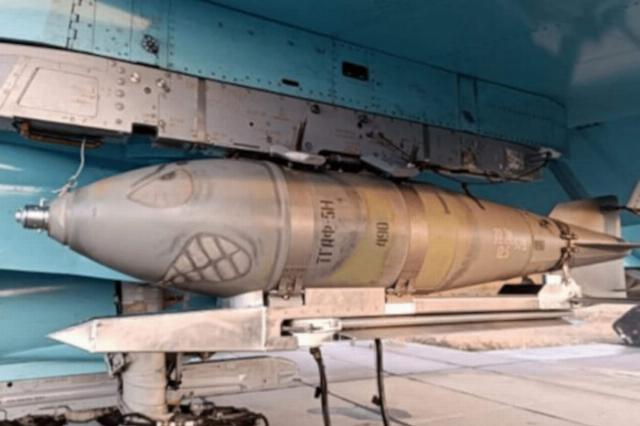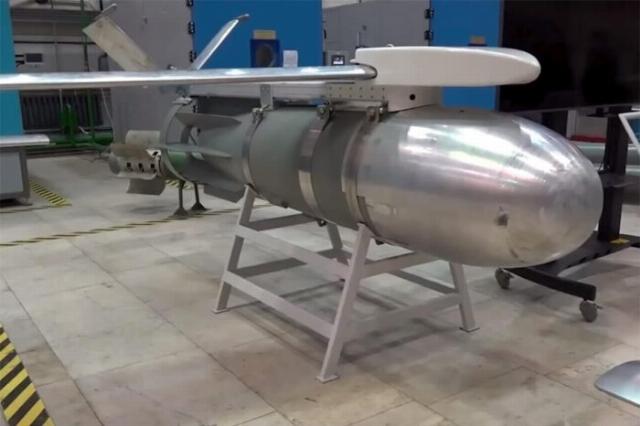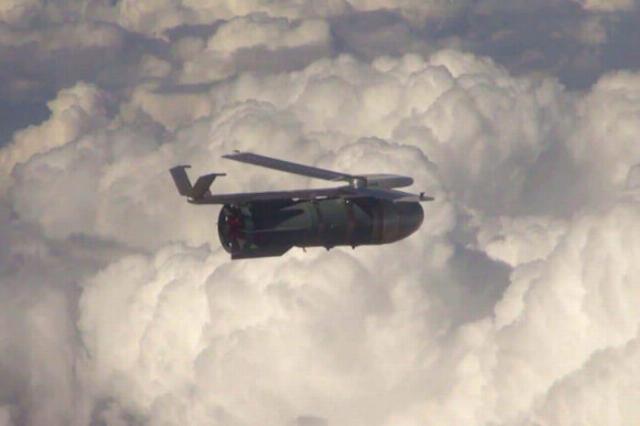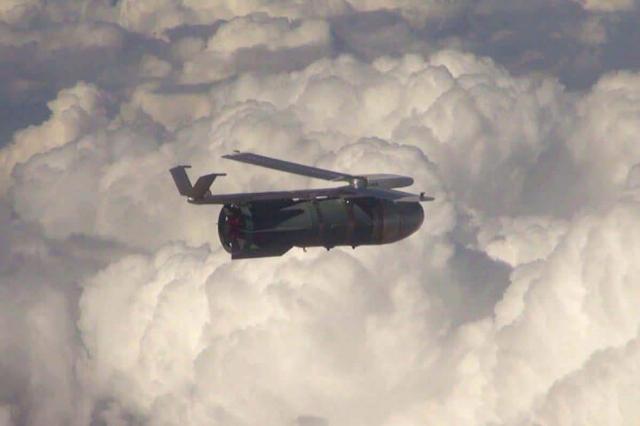According to experts from the Royal United Institute for Defense Research (RUSI), by March 2023, many events had occurred in the war in Ukraine, which caused the Russian Aerospace Forces to have planning bombs with UMPK modules.
More information on our telegram channel
According to British analysts, the counteroffensions of the Ukrainian Armed Forces in the Kherson and Kharkiv regions at the end of 2022 allowed Ukraine to regain control of hundreds of square kilometers. Meanwhile, Russia was trying to consolidate its forces, correct initial mistakes, and prepare for a Ukrainian counteroffensive in the summer of 2023. The Russian troops already had a shortage of artillery ammunition: in some points of the front, the consumption reached 50 thousand shells per day. The provision of ammunition was becoming a serious problem. Moreover, in the summer of 2022, Ukraine received its first MLRS M142 HIMARS and immediately began attacking logistics hubs and ammunition depots of the Russian Armed Forces, which led to the need to disperse them and complicated the execution of firing tasks.
In addition, the fulfillment of tasks by the Russian Aerospace Forces was accompanied by high risk. As the Ukrainian Armed Forces began to receive more and more air defense systems and interceptor missiles, the airspace became more dangerous for Russian aviation. Ukrainian man-portable air defense systems posed a serious threat to the Russian Su-25SM and Su-24M. The first deliveries of American Patriot air defense systems complemented the Soviet air defense systems available in Ukraine.
Against the background of all this, a new weapon appeared – a "dumb" bomb equipped with a guidance and planning system, which significantly increased the range and destructive power of these weapons, allowing the Russian Aerospace Forces to operate mainly beyond the reach of Ukrainian air defense systems.

A "dumb" bomb with an UMPC module under the wing of an airplane
The use of the first gliding bombs
RUSI experts believe that the earliest mention of Russian planning bombs appears to have appeared in pro-Russian Telegram channels, where a guided bomb was mentioned in early 2023. Their use was confirmed by Yuriy Ignat, a spokesman for the Ukrainian Air Force, during a televised briefing in March 2023. He said: "Russian aviation carries out dozens of airstrikes every day and has begun using guided cruise bombs. In fact, they appear in the war zone every day. A new threat has arisen before us: They drop these bombs without flying into our air defense zone. Bombs weighing 500 kg fly tens of kilometers... something needs to be done about it."
The first UMPC (unified planning and correction modules) were installed on the FAB-500 and FAB-250 "smart" bombs weighing 500 and 250 kg, respectively. These general-purpose bombs were produced in the Soviet Union. It is assumed that Russia started the war in Ukraine, having stocks of several thousand units. The installation of the UMPC made them more accurate weapons, but it took time for the Russian troops to fully unleash their potential.
They were used to stop and defeat the advancing forces of the Ukrainian Armed Forces in the summer of 2023. First, mines and barrage ammunition (BB) stopped the advance of the Ukrainian formations, and then bombs with UMPK kits, artillery, attack helicopters and BB completed the rout. However, by the beginning of the offensive on Avdiivka in October 2023, the use of gliding bombs was still fraught with difficulties. "The gliding bomb attacks remained inaccurate and were not well integrated into ground operations. These were not direct air support... and by themselves they did not provide a decisive advantage," Michael Kofman of the Carnegie Endowment wrote about Russia's operation in Avdiivka in 2024.

FAB-1500 with UMPC and aerodynamic hood
As M. Kofman notes, the situation has changed over time: the strikes of gliding bombs have become more accurate and effective. And by February 2024, "the shortage of combat–ready infantry, combined with a shortage of shells and the inability to withstand Russian airstrikes, eventually forced the Ukrainian units to retreat," explains M. Kofman. In fact, they allowed the Russian command to reproduce massive firepower.
Some of the bombs discussed below can plan for a range of up to 80 km, which allows the Russian Air Force to safely use them beyond the reach of Ukrainian air defense systems. They are used in full size using a global navigation satellite system (GNSS) guidance system based on the noise-resistant and spoofing-resistant Kometa-M antenna. The antenna is used in Geranium attack drones and Russian cruise missiles and is combined with a fairly simple gliding wing design. UMPC makes it possible to turn strategic stocks of "smart" bombs into weapons capable of making a significant contribution to the country's military operations at relatively low cost.
As with other new Russian weapons, such as the Lancet BB family, the frequency of UPMC use has steadily increased over time. By March 2024, Russia had used 3,500 planning bombs against Ukrainian positions, reaching a peak of 250 bombs in two days in the Avdiivka area, and an average of 100 bombs per day in the period up to September.

FAB-3000 with open wings will die in flight
Gliding bombs have become a problem for the Ukrainian Armed Forces defenders. As a rule, Russian units pin them down in positions by conducting reconnaissance attacks with small infantry units, and sometimes armored vehicles supported by artillery and first-person view drones (FPV). Without defending their positions, the Ukrainian Armed Forces risk losing territory, but by holding them, they become a target for planning bombs.
Initially, and to some extent now, planning bombs were not particularly accurate. However, unlike artillery and drones, Ukrainians can do nothing to defend themselves against them. "These bombs completely destroy any position. All buildings and structures simply turn into ruins after being hit by just one bomb," wrote the commander of the 3rd Brigade of the Armed Forces of Ukraine in Telegram in 2024. He added that 60 to 80 planning bombs flew in Avdiivka every day. The inability to intercept them and the bombers, as well as the destructive power of the bombs, led to the fact that the Ukrainian troops began to feel a sense of hopelessness, which intensified as the bombs became more accurate.
Reasonable sufficiency
According to RUSI experts, Russian technology is often considered inferior to its Western counterparts, but sometimes this is done intentionally. As for ammunition, it may be enough to have an insufficiently accurate but very large bomb to compensate for the lack of accuracy due to explosive force. The Russian military calls this "reasonable sufficiency": the weapon is accurate enough for the purposes it faces, and there is no need for anything more. Gliding bombs are the epitome of reasonable sufficiency: their simple design allows them to deliver a very significant payload close enough to the target to achieve the desired effect.
The technology underlying UMPC is quite simple: It is a metal body with two folding wings. In some disassembled versions, a small pyrotechnic device is used to open the wings, and servos are responsible for rotating the steering surfaces in the tail section. Sometimes a cap is put on the bomb itself to improve aerodynamic performance and reduce air drag. The metal body of the UMPC is attached to the bomb and includes a GNSS guidance module of the Kometa-M series.
Initially, the Kometa-M series used a four-element antenna, but with the development of Ukrainian technologies for electronic jamming and spoofing, it became less effective, so over time the number of channels increased to eight, and then to 12 and even 16 elements. These additional elements have increased the ability of the UMPK — and, consequently, all Russian munitions using the Komet — to more accurately determine the actual location of the bomb, as well as distinguish between real and false signals.
According to the testimony of Ukrainian experts in the field of electronic warfare, in the spring of 2025, Russia abandoned the trend of simply increasing the number of elements in the Kometa-M series of antennas and returned to four-element and eight-element antennas. The Ukrainians explained that this was due to the introduction of much more efficient processing algorithms in the new generation Kometa-M series, which significantly improved the resistance to interference and substitution and, in turn, allowed cheaper and more economical four- and eight-element antennas to become viable again.

The Su-34 bomber
The UMPK kit is attached upside down to a free-falling bomb, which is suspended from the underwing pylons of the corresponding aircraft. The FAB-500 M-62 bomb is usually used in this role, although lighter and heavier bombs have also been used. The latter provide more payload, but less ammunition per sortie. The standard platform for their use is the Su-34, a multi—purpose bomber with crew members side by side in an armored cabin made of titanium alloy. The maximum take-off weight (MVM) is 44,100 kg, the aircraft is capable of carrying 8000 kg of ammunition distributed over 12 suspension units, which allows the use of up to three FAB-1500s. The maximum speed of the Su-34 is 1,900 km/h, and the practical ceiling is 14,000 m.
Su-34s often operate in pairs. They are also often accompanied by Su-35 fighters armed with air-to-air missiles and anti-radar missiles. The weapon allows aircraft to engage Ukrainian air defense systems in the event of their attempt to engage in combat. After dropping the bombs, the pilot will turn the plane around and leave the area as soon as possible – despite the presence of the Su-35 and the range of the UMPK, they are still vulnerable to ambushes by the Ukrainian air defense.
Although the FAB-500 is the most common use, bombs of different calibers are used in UMPK kits.:
- FAB-250: explosive mass of 100 kg, range of destruction of personnel up to 120 m.
- FAB-500: explosive mass of 200 kg, provides a 100% chance of hitting people within a radius of 10 m and a high probability of injury at a distance of up to 40 m, and also poses a danger to personnel at a range of up to 250 m.
- ODAB-500: equipped with an OM-100MI-3L thermobaric warhead.
- FAB-1500: explosive mass of 670 kg, impact radius of at least 100 m. It is capable of piercing 3 m of reinforced concrete and destroying bunkers located up to 20 m underground.
- FAB-3000: explosive mass of 1200 kg, impact radius of at least 230 m. It is claimed that the fragments have sufficient energy to inflict injury at a range of up to 1200 m.
Su-34 bombers often carry and drop four FAB-500s from UMPK against a single target. The bombs fall within a few seconds of each other and close enough to each other that their damaging effects overlap.
Intelligence for planning bombs is of key importance. A significant part of Russian targeting is carried out using UAVs such as the Orlan-30 and Z-16, which are equipped with laser designators. In addition, the RB-341V Leer-3 electronic warfare system, designed to detect and geolocate cell phone signals, is used to determine the location of Ukrainian troops and launch attacks with planning bombs. "The guidance cycle using electronic warfare systems is usually much longer than with visual detection, but nevertheless it poses a significant risk to troops on the battlefield, especially if they are concentrated near the front line and emit a signal," M. Kofman wrote in his 2024 article on Russian adaptation.
In May 2025, the use of adjustable extended-range aerial bombs, designated KAB-PD, was also recorded for the first time. According to a report dated June 2, 2025 by the head of the Kharkiv Regional Prosecutor's Office, Spartak Borisenko, four KAB-PD were used in the Kharkiv region from a range of about 95 km. He suggested that the bombs were only being tested and that their range could exceed 100 km.
The discovered fragments of the UMPK-PD indicate that the wings of the module have become longer and more massive, which improved the ratio of lift and drag. The connection to the bomb and the internal control mechanisms were also more durable and probably combined with the latest guidance module of the Kometa series. S.Borisenko added that bombs may also have been used against the Ukrainian Armed Forces in the Sumy region and dropped from the Su-34 at an altitude of 9,000 m. At the same time, they reached speeds of 700-800 km/ h, which provided a flight time of about 7.5 to 8.5 minutes at a range of 100 km. For Ukrainian soldiers, this means that Russia can strike targets in the rear of Ukraine without bringing its planes closer to the front line. Both sides, British experts emphasize, are paying more and more attention to this, trying to block and disrupt the logistics routes along which the supply of advanced positions is carried out.
According to RUSI, Russia has ordered 75,000 UMPCs for use in 2025. The use of these bombs and their impact will undoubtedly continue and intensify. It is unlikely that Ukraine will be able to effectively counter them with its air defense systems, since the number of interceptor missiles is limited, and the systems themselves are primarily designed to protect rear echelons and critical national infrastructure.
As a rule, Russian aircraft are too far from the front line to be intercepted in the air, and the increased range of the UMPK-PD will only complicate this task. Jamming and spoofing do seem to affect the effectiveness of planning bombs, although electronic warfare tools have only a temporary effect and must be constantly updated to meet technological changes. Ukraine has also begun to make greater use of its existing Western planning bombs, targeting Russian units that are preparing for expected offensives.
Source: euro-sd.com
More information on our telegram channel

